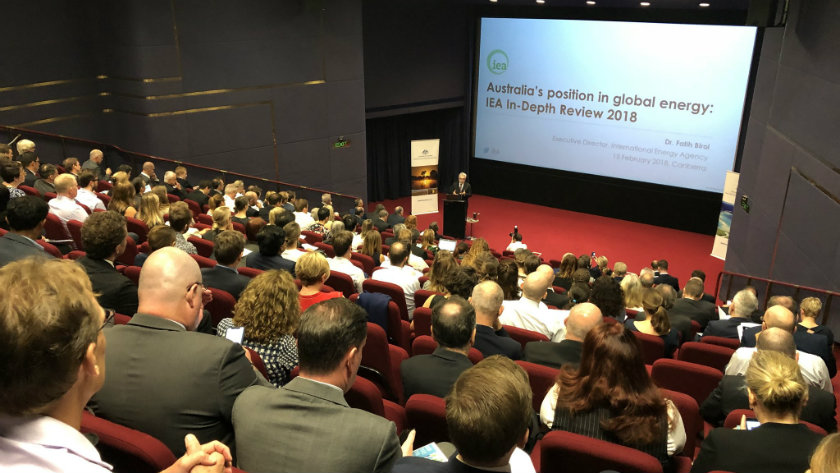While elegantly framed, the IEA’s latest review of Australian energy policy, the first since 2012, has outlined what many within the renewables industry have long known: That a series of policy failures and a lack of competition in gas and electricity markets have resulted in a carbon emissions trajectory above the country’s international commitments, and locked in high electricity prices since 2012.
The report has called for a “national, integrated energy and climate policy framework” for 2030 based on a low-emission development strategy for 2050.”
In its media statement announcing the report’s release, the IEA praised the Federal Government for emphasising the need for energy security and resilience. However, it also set out a clear and urgent need for concrete and coordinated policymaking.
“A comprehensive national energy and climate strategy is needed for Australia to have a cleaner and more secure energy future,” said Faith Birol, IEA Executive Director, in a statement while presenting the findings yesterday.
The IEA is adept at framing its analyses of energy policies, and its ‘forecasts’, in terms that are palatable to political interests and incumbent energy market players. However, it is coming under increasing pressure for its woeful track record on forecasting the growth of renewable energy sources in its World Energy Outlook publications – in particular for solar PV.
The agency has been increasingly strident in its rhetoric in terms of the need for more robust policy settings, through which national governments can enable a transition towards low or zero-carbon energy systems. And in its latest report on Australia, it has highlighted a number of enlightening, if not ground-breaking, findings.
Some telling observations in its latest Australia publication include:
- Energy prices in the country have remained high since 2012, “against low levels of competition in gas and electricity markets and low consumer choice.”
- Resilience of electricity supply is being tested as “old coal plants” retire.
- That energy policy in Australia “is very complex and fragmented.” And that it “suffers from frequent changes of policy direction and institutions at Commonwealth level.”
In outlining the need for a clear and coordinated policy framework towards 2030 and emissions reduction goal for 2050, the IEA calls for cooperation between the Federal and state governments. “In short, a strategic and enduring policy response towards an orderly energy transition is required.”
The report argues that such policies and goals are critical “to guarantee visibility for investors and consumers alike.”
The IEA notes that the energy transformation is occurring faster and more widely “than expected”, driven by falling renewable generation costs, batteries and developments in energy efficiency.
Editor’s note: The IEA argues that it does not issue forecasts in its WEO publications. It produces scenarios for renewable technology adoption based on policy setting and its models.
This content is protected by copyright and may not be reused. If you want to cooperate with us and would like to reuse some of our content, please contact: editors@pv-magazine.com.









By submitting this form you agree to pv magazine using your data for the purposes of publishing your comment.
Your personal data will only be disclosed or otherwise transmitted to third parties for the purposes of spam filtering or if this is necessary for technical maintenance of the website. Any other transfer to third parties will not take place unless this is justified on the basis of applicable data protection regulations or if pv magazine is legally obliged to do so.
You may revoke this consent at any time with effect for the future, in which case your personal data will be deleted immediately. Otherwise, your data will be deleted if pv magazine has processed your request or the purpose of data storage is fulfilled.
Further information on data privacy can be found in our Data Protection Policy.